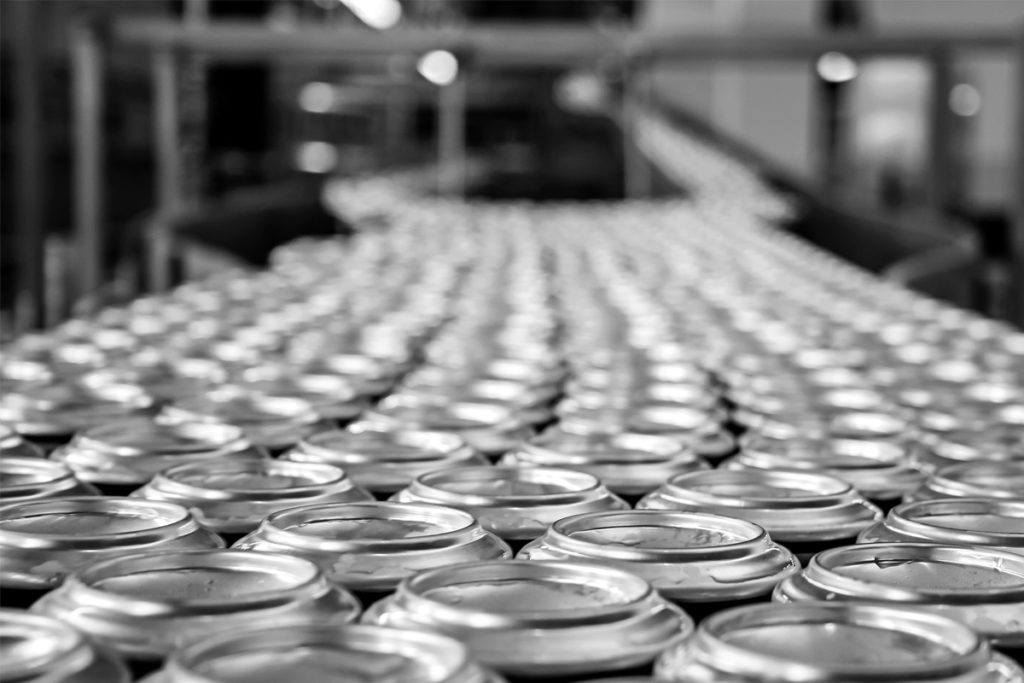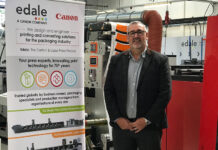A traditional soft drink canning line processes enough beverage to fill two Olympic-size swimming pools every week – and that’s over 1.5 million cans. A typical alcoholic beverage can line would fill a pool even faster. The question is, could your coder keep up the pace? Domino’s global beverage sector manager Russell Wiseman shares his views on the challenges and future of canning production
What are the main challenges when coding on beverage cans?
In this industry there is no overcapacity. It’s where supply chain driven efficiencies demand higher productivity so it’s imperative there is no downtime.
The introduction of more stringent legislation around unique product identification is a common trend in the beverage industry. Coding that facilitates the track and trace of products with pinpoint accuracy are commonly required by legislation due to recalls.
The challenges of sugar laden air or moisture on equipment and on cans themselves arises often. Within this harsh environment, it’s hard to imagine how legible 20-plus character codes appear on up to 100,000 cans per hour, but it can.
Fibre laser coding also addresses the challenge of guaranteeing that inks adhere to wet cans – because there is no ink to adhere. There is no issue with laser coding onto condensate cans.
Flagship brands are in decline as beverage producers extend their portfolios to satisfy diversified consumer demand. With product changeovers more frequent, there could be downtime if the machinery needs to be reconfigured.
Production Managers and Operators have strict targets which often include objectives around Overall Equipment Effectiveness (OEE) and productivity.
Key coding pain points:
• Errors and poor code quality
• Frequent downtime for maintenance/ink changeovers
• Extended downtime due to product changeover
• Limited production due to printer performance
On top of these challenges, when factory floor temperatures reach 45°C coding capacity can drop by almost a third – a sobering thought when weighed against the existing challenges already mentioned.
To give production managers and operators the best opportunity to achieve their targets, coding equipment manufacturers must take stock of and reduce these challenges where possible.
What is Domino’s approach to these challenges?
Domino’s laser specialists devised a new solution – the Beverage Can Coding System – to withstand the heat and humidity of canning factory floors.
Domino’s Beverage Can Coding System’s near zero-maintenance profile means uptime is maximised. Laser coders do not need the inks and fluids required for print coding systems, which significantly reduces consumable changes and cleaning regimes.
Domino’s system is designed to facilitate can size changes quickly. It synchronises adjustments for the laser focal point, verification camera and fume extraction nozzle with product changeovers changeover. By removing the need to recalibrate each component separately, the system can bring significant time savings to lines with frequent changeovers.
In spite of the challenges, Domino’s Beverage Can Coding System is fully capable of delivering legible 20-plus character codes at a rate of up to 100,000 cans an hour.
The introduction of this system with an optional chiller, means it easily meets the challenge of operating at an ambient temperature of up to 45°C. In conditions where competitors’ machinery would struggle with a 70% duty cycle rate, a modular closed loop chiller-fitted system from Domino can achieve a 100% capacity.
Canned beverage manufacturers may be hesitant to install a Fibre Laser coder on their production line owing to a lack of familiarity with the technology. How does Domino ensure that they are comfortable using it?
The Domino-developed protection guard meets Laser Class 1 standards. It was designed and purpose-built for the beverage industry and it includes the CE mark.
When laser coding 100,000 cans per hour, laser light emissions must be controlled. Domino offers a full solution package in which the right guarding is included for laser coding. Additionally, there is an option to programme electronic door locking through the system’s PLC (Programmable Logic Controller).
The Beverage Can Coding System is a purpose-built, integrated, plug-and-play solution that has been specifically designed to improve the OEE and resolve the key challenges in demanding beverage production environments.
The laser is a simple solution, which once running, integrates seamlessly and is low maintenance. What manufacturers get is high-quality, indelible coding at top production speeds on all standard can sizes.













